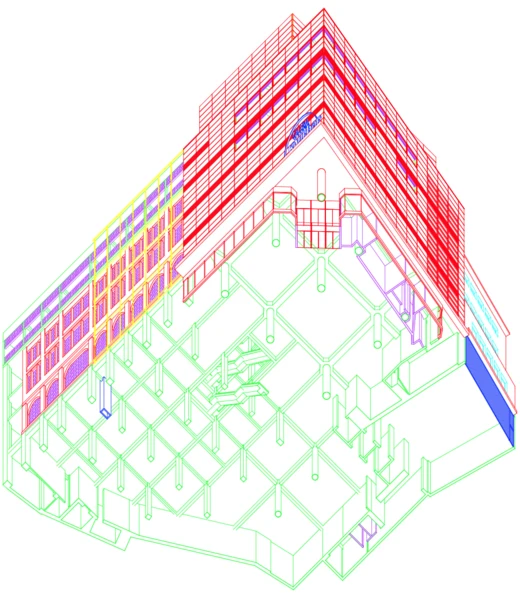
Drawing by Arne Hackmann, Lennart Knoop, Vincent Kurrle, Jonas Wald.
The Existing as a Precondition –
Drawing the Values and Potentials of 1960s and 1970s Department Store Buildings
The primary motivation behind this work stems from an intuitive fascination with buildings from the 1960s and 1970s – both for their physical presence in the urban landscape and for their rational, large-scale structures. Representing nearly a third of Europe’s building stock, these buildings form a late-modernist legacy that challenges our relationship with the built environment. Department stores stand out as particularly prototypical: rational in construction and typology, yet embodying the capitalist ethos of democratized consumerism. In many ways, they can be read as materialized capitalism. Today, many of these buildings have reached the end of their first lifecycle – requiring renovation but often facing demolition, driven by economic systems that neglect ecological and cultural considerations.
Focusing on department stores of the boom years, this research explores how the values and potentials of the existing can be represented through architectural drawings. Since any transformation begins with documentation, representation is understood as an active design tool rather than a passive means of recording. By examining different drawing strategies, this research investigates how we see, categorize, and reimagine architecture and to bridge technical, aesthetic, and material considerations – positioning reuse as an integral rather than exceptional architectural practice and a design strategy to start from what is already there.
The seminar Bestand als Bedingung is offered in the context of the research project.
Contact: Tobias Fink